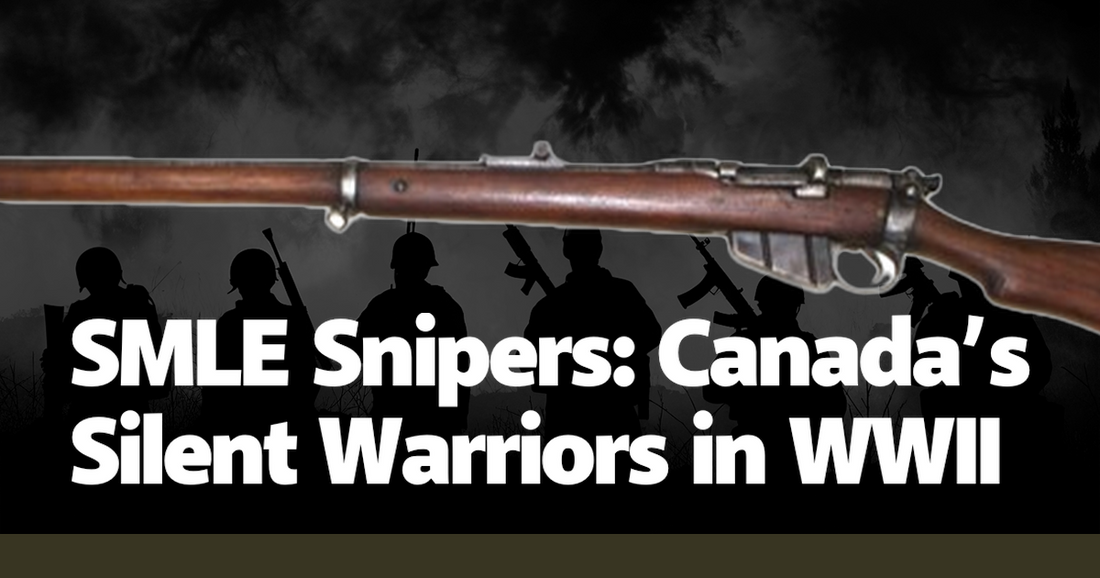During the harrowing days of World War II, the Canadian military found itself in the crucible of conflict, contributing significantly to the Allied war effort. Among the various elements of their armed forces, the snipers who wielded the Short Magazine Lee-Enfield (SMLE) rifles emerged as silent specters on the battlefield. These marksmen, trained to perfection and armed with one of the most reliable rifles of the era, played a pivotal role in shaping the course of numerous engagements. Their stories, often overshadowed by the broader narratives of the war, reflect a blend of precision, patience, and unparalleled bravery.
The SMLE rifle, officially known as the Rifle, Short, Magazine, Lee-Enfield, was a British bolt-action rifle that became the standard issue for Commonwealth forces. Its design, which included a 10-round magazine and a rapid bolt-action mechanism, made it ideal for the varied and often brutal conditions of WWII. Canadian snipers, trained in the art of stealth and marksmanship, found the SMLE to be an indispensable tool. The rifle's accuracy and reliability allowed them to engage targets at long distances, often turning the tide of skirmishes by eliminating key enemy personnel or creating chaos within enemy ranks.
One of the most notable Canadian snipers of WWII was Corporal Francis Pegahmagabow, an Ojibwa soldier who became one of the most effective snipers in the conflict. His prowess with the SMLE was legendary; he is credited with over 378 confirmed kills and numerous other unconfirmed hits. Pegahmagabow's ability to navigate the treacherous terrain of the European theatre, combined with his exceptional marksmanship, made him a formidable force. His story is a testament to the skill and determination of Canadian snipers, who often operated alone or in small teams, relying on their wits and their rifles to survive.
The training regimen for Canadian snipers was rigorous and comprehensive. Candidates were selected based on their shooting skills, physical endurance, and mental resilience. Training included not only marksmanship but also camouflage techniques, fieldcraft, and the psychological aspects of sniping. The SMLE rifle, with its robust construction and ease of maintenance, was a perfect match for these elite soldiers. Its ability to remain accurate under adverse conditions, such as mud, rain, and snow, ensured that Canadian snipers could operate effectively in the diverse environments they encountered.
In the dense forests of France, the ruined cities of Italy, and the open fields of the Netherlands, Canadian snipers with their SMLE rifles became a constant threat to Axis forces. They would often spend days in hiding, waiting for the perfect moment to strike. The psychological impact of their presence was profound; enemy soldiers knew that death could come from any direction, at any time. This sense of omnipresent danger disrupted enemy movements, lowered morale, and forced the Axis to divert resources to counter-sniper operations, thereby aiding larger Allied strategies.
One particularly harrowing account involves Sergeant Harold Marshall, a Canadian sniper who played a critical role during the Battle of Ortona in Italy. Using his SMLE, Marshall was tasked with eliminating enemy machine gunners who were pinning down Canadian infantry. Over the course of several days, he meticulously picked off enemy gunners, often under heavy fire. His actions not only saved countless lives but also allowed Canadian forces to advance and eventually capture the town. Stories like Marshall's highlight the crucial, yet often uncelebrated, contributions of snipers in the broader context of the war.
The legacy of Canadian snipers and their SMLE rifles extends beyond their immediate tactical impact. Their success demonstrated the effectiveness of specialized training and equipment, influencing post-war military doctrines and sniper programs. The principles of patience, precision, and psychological warfare that these snipers embodied continue to be integral to modern military operations. The SMLE itself, while eventually replaced by more modern rifles, remains a symbol of the ingenuity and resilience of the soldiers who wielded it.
In reflecting on the contributions of Canadian snipers during WWII, it is essential to recognize the blend of individual heroism and collective effort that defined their operations. These soldiers, often operating in the shadows, exemplified the quiet determination and unwavering resolve that characterized Canada's military efforts during the war. Their stories, etched in the annals of history, serve as a poignant reminder of the sacrifices made and the silent warriors who played a crucial role in securing victory for the Allies.

